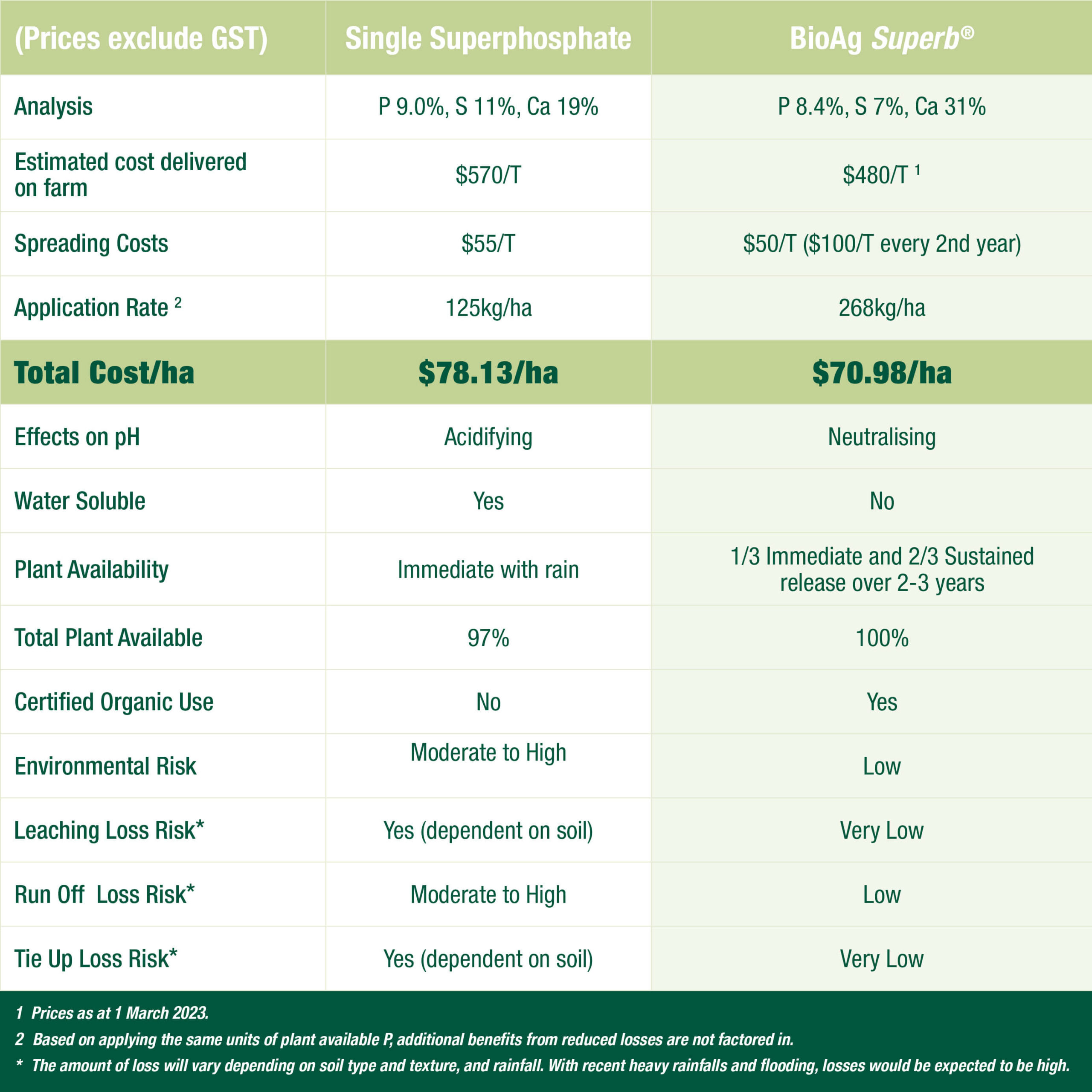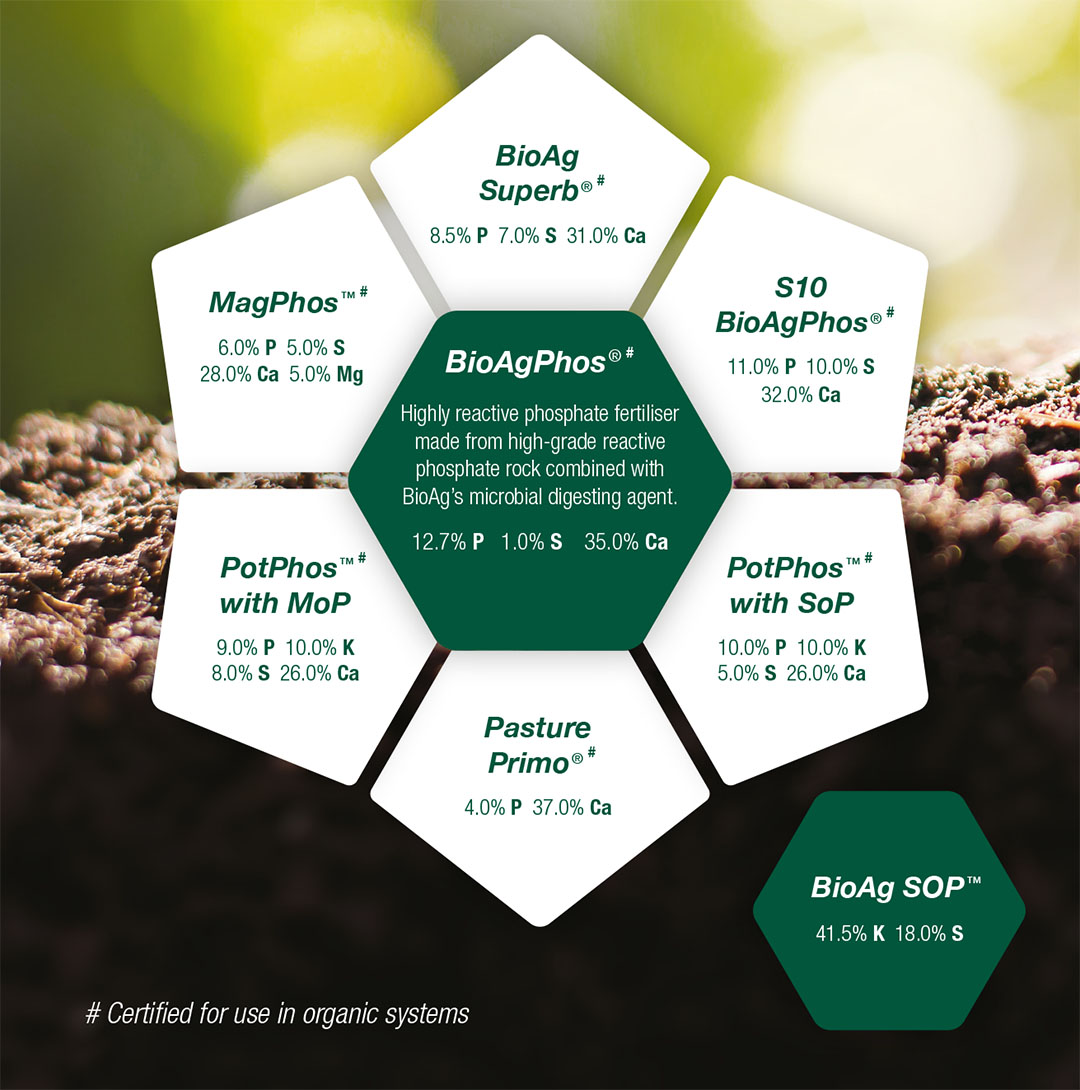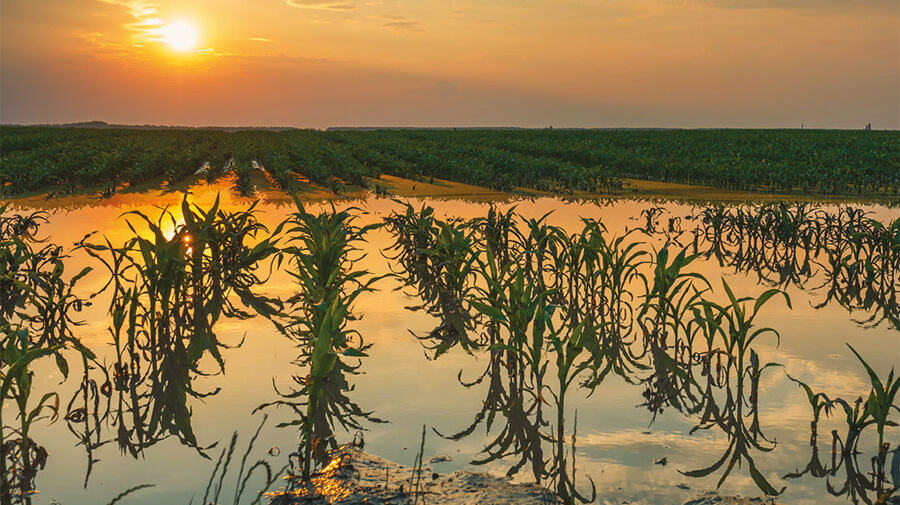
Latest
News
BioAgPhos Fertilisers: the perfect solution for ALL conditions
With the record-breaking wet conditions in 2022 and the elevated cost of fertilisers, matching the right product type and amount to meet your soil fertility and productivity needs this summer is more important than ever.
Many soils will have been subjected to large nutrient losses due to flooding, high run-off and leaching events, coupled with several years of above average production-related nutrient removal. With the BOM forecasting more rain into early 2023, accessing a more sustainable source of phosphorus (P) and related fertiliser products should be top of mind, particularly where key macronutrients are needed to maintain fertile soils.
BioAg’s solid fertiliser range is based on BioAgPhos which is a high-grade, highly reactive rock phosphate (RPR) combined with BioAg’s proprietary microbial digesting agent (a fermented culture). The result is a natural and sustainable alternative to water soluble/acidulated phosphates which are highly susceptible to run-off and leaching events. BioAgPhos is less reliant on rainfall to be plant available, making it also ideal for application in dry seasons. Given its high-grade and high reactivity, it can be used at lower volumes, and spread at any time of the year, allowing farmers to take advantage of opportunistic low-cost freight or spreading.
BioAgPhos delivers both an immediate and continuing release of P and calcium (Ca) over a 2 to 3 year window, with 100% of P being plant available over this timeframe, giving growers full value for their investment. With the slow digest and release advantage, farmers can choose either an annual or biennial (every second year) application, making the product extremely cost and time effective.
Analysis wise, BioAgPhos contains 12.7% P, 35% Ca, and 1% sulphur (S). We source our RPR from Algeria as it is the best product to meet the production needs of our customers and is also a reliable supply source. BioAgPhos is produced from natural minerals and biostimulants and is certified for use in organic input by both Australian Organics (ACO) and the USA National Organic Program (NOP). With less than half of the cadmium content of Australian-made Single Superphosphate (SSP), the BioAgPhos range of solid fertilisers is safe to spread on all areas including near waterways.
BioAgPhos physically incorporates quickly into the topsoil due to its high density and fine particle size, with a more even surface area and distribution of nutrients providing greater accessibility to foraging plant roots (refer to this article for more information on Nutrient Mobility). It can also be mixed on farm with other soil ameliorants like lime and gypsum to be spread in one pass. Again, another time and money saving advantage. Custom blends with other macro and micronutrients such as sulphur, potassium, magnesium, copper, boron, zinc and molybdenum can be prepared as required to suit specific soil needs.
Due to its high reactivity, it is 41% Citric acid soluble, and 73% Formic acid soluble, a really important indicator as to its performance as a P fertiliser. Independent testing by the National Measurement Institute (NMI – the Australian Government’s reference laboratory), has determined that around one-third of P and Ca are immediately available, with the balance slowly digested and released over 2 to 3 years.
The 35% Ca component of BioAgPhos, means it has around half the neutralising effect of lime on a tonne for tonne basis. Water soluble phosphate fertilisers, on the other hand, contribute to soil acidification and are more susceptible to loss pathways such as leeching, runoff, and tie up in antagonistic and acidic soils. BioAgPhos, however, will only really be lost if the topsoil is washed away which is rare, particularly when there is good ground cover present.
Conventional fertilisers such as SSP have traditionally been considered as ‘a low-cost ready source of P and S’. However, water soluble phosphate fertilisers are just that – they quickly dissolve into the soil solution, which makes them highly susceptible to loss pathways in wet conditions. When you consider the bigger picture of rising fertiliser and application costs, supply-chain uncertainty, and wet conditions continuing, not to mention impacts on the environment and food nutrition from synthetic fertilisers, that perception of ‘low-cost’ no longer rings true.
Take a look at the comparison in the table below, between SSP and BioAg’s Superb solid fertiliser natural alternative.
Extensive trials have shown that BioAg’s Superb applied biennially gives equal if not improved yields to conventional fertilisers.
Click to visit the case study results:
Kangaroo Island
Dadswell Bridge
Crookwell
In terms of cost and return on investment, particularly with highly antagonistic or wet conditions, the effectiveness of BioAgPhos based fertilisers represents a safer, more sustainable and financially smarter solution.




Recent Comments